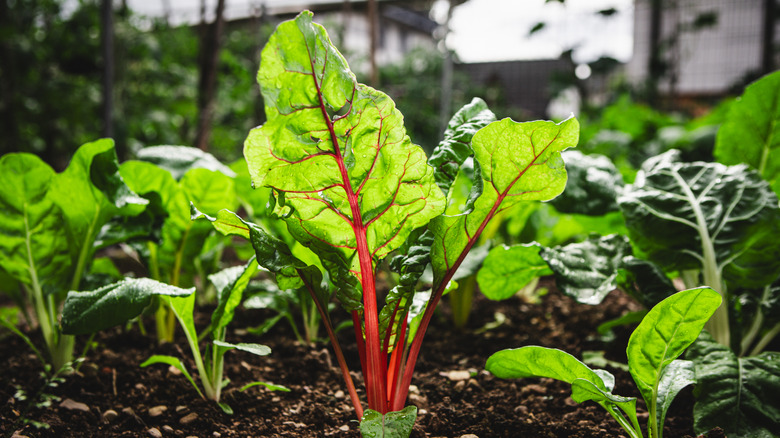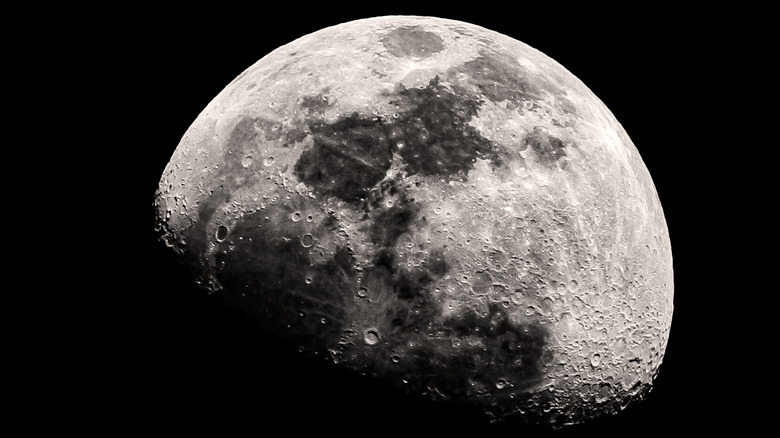How To Plant Leafy Greens Using An Old-School Technique
For vibrant leafy green plants, have you ever considered gardening by the moon? No, it's not the same as a moon garden (i.e. a collection of plants that are at their loveliest under the light of the moon) and it doesn't involve midnight landscaping. Instead, for a successful crop of leafy greens such as spinach, cabbage and arugula, one old-school technique suggests you should be planting your seeds during a waxing moon.
A waxing moon is when the moon appears to be gradually getting bigger each night, growing from a new moon to a full moon. If you need a refresher on lunar phases, remember: a new moon is when no moon is visible; a waxing moon is when the moon appears to be getting bigger; a full moon is when the moon is completely illuminated; and a waning moon is when the moon appears to be getting smaller.
So what does the moon and its phases have to do with plants? The theory goes that the moon's gravitational pull affects not only ocean tides, but also moisture levels in the soil. The moon is also said to impact a plant's "geotropism," or how its growth responds to gravity — pushing the development of strong roots during a waning moon, and pulling long leaves and stems during a waxing moon. The ever-increasing brightness from a waxing moon also supposedly encourages the growth of hearty leaves and stems, much like a sunny day encourages new growth. By this logic, annual flowers and above-ground fruits and vegetables (i.e. crops that yield their harvest above the soil where you can see it) should be planted during a waxing moon, while perennial flowers and below-ground crops should be planted during a waning moon.
Here's how to plant by the waxing moon
If you're ready to get started, the good news is there's a bunch of leafy greens you can still plant even in late summer or fall, and doing so with the moon as your guide is fairly straightforward. Simply start planting above-ground plants anytime between the start of a new moon to the day the moon is full. With the moon's gravitational pull drawing water up from the earth to the soil's surface, your above-ground plants purportedly have the best opportunity of thriving during this period, giving you approximately two weeks each month to plant leafy greens for optimal growth. To see what the moon phase will be on any given day, check out NASA's Daily Moon Guide.
But does planting by the moon actually work, is it just a bit of loony folklore? A definitive link between lunar phases and plant growth hasn't been proven. Researchers have found that while gravity does indeed impact plant growth, the moon's gravitational pull is about 300,000 times less than the impact of the Earth's own gravitational pull, making any impact by the moon on plant growth incredibly minimal, if it even exists at all. However, when taken into account with other considerations such as soil quality, pest management, and proper water and sunlight exposure, many farmers do claim that planting in accordance with the lunar cycle is one more important aspect of growing healthy crops. Plus, generations of successful farmers — from the ancient Egyptians and Romans to the U.S. founding father Benjamin Franklin — have sworn by sowing based on the phases of the moon; so if you follow this advice, you'll certainly be in good company.

